Achievement of Curriculum for Excellence (CfE) Levels 2020-21
Results of the achievement of curriculum for excellence (CFE) levels 2020 to 2021.
This document is part of a collection
Infographics
- ACEL 2020/21 publication covers Primary school children (P1, P4 and P7). Secondary school and special school data were not collected.
- ACEL 2019/20 collection and publication was cancelled.
For more information on the impact of Covid-19 on these statistics please see Chapter 1.3.
The percentage of pupils achieving the expected CfE Level has decreased in 2020/21 across all organisers and stages compared to 2018/19.
The proportion of primary school pupils achieving the expected CfE Level in literacy and numeracy has decreased by 5.4 and 4.4 percentage points respectively between 2018/19 and 2020/21.
Percentage of primary pupils achieving expected level in Literacy and Numeracy
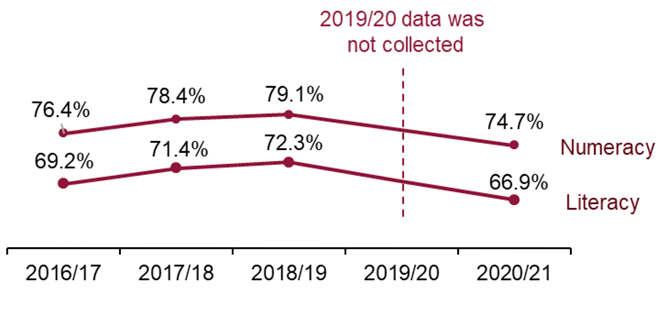
75% of primary pupils school pupils achieved the expected CfE Level for reading and 83% for listening & talking.
70% of primary pupils achieved the expected CfE Level for writing.
75% of primary pupils achieved the expected CfE Level for numeracy
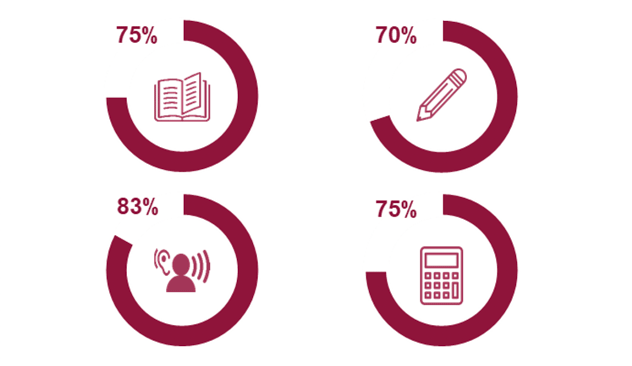
At all stages and across all literacy organisers, females outperformed males; this pattern has been consistent since 2016/17.
The largest difference in performance at primary was in writing with females outperforming males by 12 percentage points.
Across all organisers the smallest difference in performance by sex was in numeracy.
Percentage of primary pupils achieving expected CfE Levels by sex
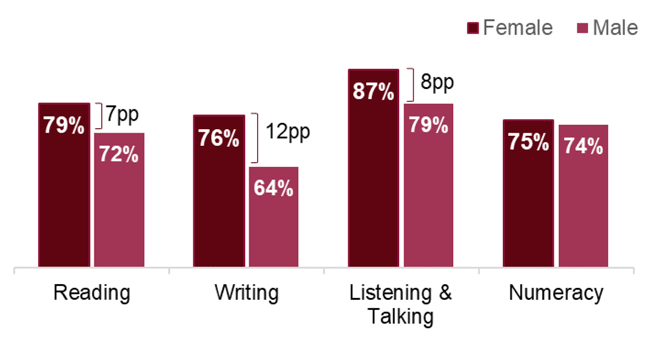
The proportion of pupils achieving the expected level across all stages and organisers was lower for pupils with an Additional Support Need than for those without.
Across all stages and organisers the percentage of pupils achieving the expected level was lower for pupils with English as an Additional Language (EAL) than for those with English as Main Language (EML).
This pattern has been consistent since 2016/17.
Percentage of primary pupils achieving expected CfE Levels by Additional Support Need (ASN) Status and by English as an Additiona Language (EAL)
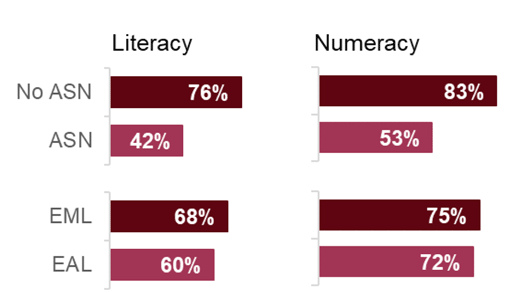
The proportion of primary pupils achieving the expected levels in literacy and numeracy has decreased for both pupils in the most and least deprived areas, in 2020/21.
The attainment gap between pupils in the most and least deprived areas in literacy and numeracy has increased in 2020/21 because pupils in the most deprived areas experienced a bigger drop in attainment.
The attainment gap in literacy among primary school pupils increased from 20.7 percentage points in 2018/19 to 24.7 percentage points in 2020/21
The attainment gap in numeracy among primary school pupils increased from 16.8 percentage points in 2018/19 to 21.4 percentage points in 2020/21.
The attainment gap in literacy between primary school pupils in the most and least deprived areas, 2016/17 to 2020/21
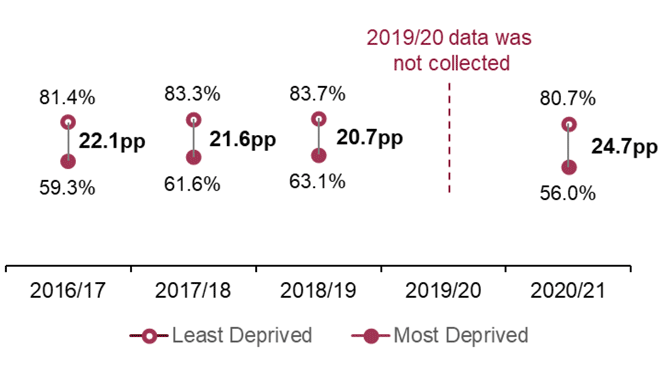
The attainment gap in numeracy between primary school pupils in the most and least deprived areas, 2016/17 to 2020/21
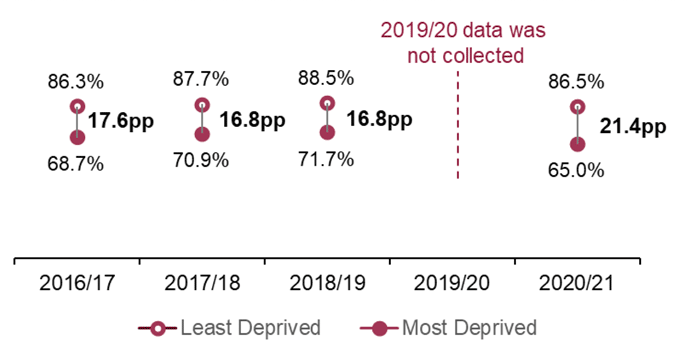
Notes:
pp = percentage point difference between most and least deprived
Based on SIMD 2016 for 2016/17 to 2018/19 and on SIMD 2020 for 2020/21. More information can be found on Scottish Index of Multiple Deprivation.
Caution should be exercised when making comparisons over time; for more information see Chapter 8.1.4.3
Contact
Email: Andrew.White@gov.scot
There is a problem
Thanks for your feedback